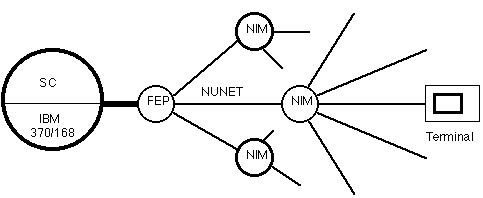
Our MTS system, running on an IBM 370/168, was already overloaded and we dare not introduce any form of screen editing which would cause further congestion.
Most people were using command line editors, which caused interaction with the host at the end of every line typed. The program in the host might well have to be transferred into memory and out again at each transaction.
We had to have a solution which offered a lower, or, at the very least, no higher transaction rate.

The solution was to have the host specify to the NIM an invisible rectangular box on the terminal screen. The host would also send control sequences to place the cursor inside the box.
Ordinary or cursor control characters typed by the user would be stored and echoed by the NIM, which would compute where the cursor had moved to in relation to the invisible cursor box.
As soon as the NIM detected that the cursor had left the box, it would cease echoing and forward the stored characters to the host, which could reconstruct the state of the screen and take whatever action was appropriate.
The host would also be informed immediately the user typed control characters outside of the cursor control set.
We were then able to implement a Screen Editor (SC) which took advantage of the Cursor Box.

The box would initially cover the whole of the modifiable area between the rules, but could be reduced to cover insertion fields as required.
In theory, a user could change the whole modifiable area without causing a host transaction, but, in practice, we found the transaction rate to be about the same as it had been with the line editors.
With SSMP we were able to produce an enhanced screen editor called CURLEW and an email presentation program called EMU.

The Transition from Centralized to Distributed Computing / Contents Page - 40 years of Computing at Newcastle